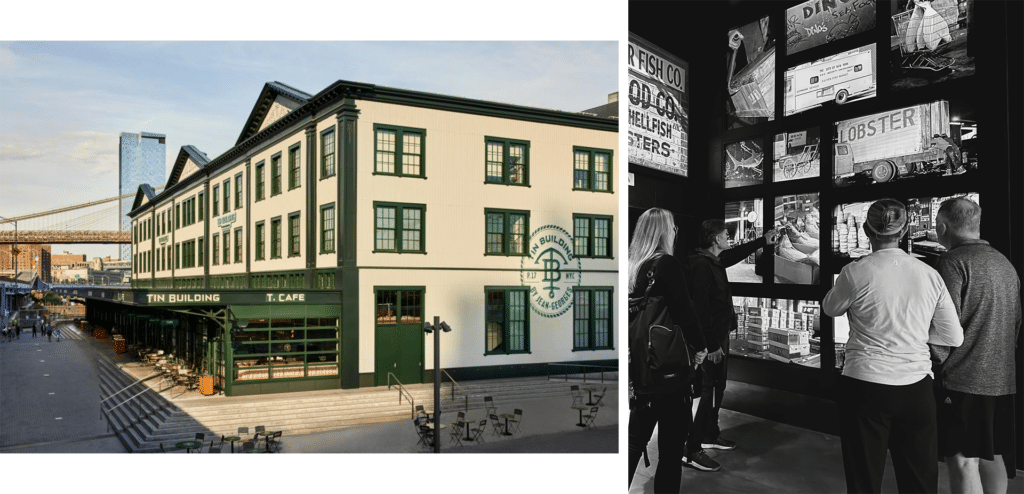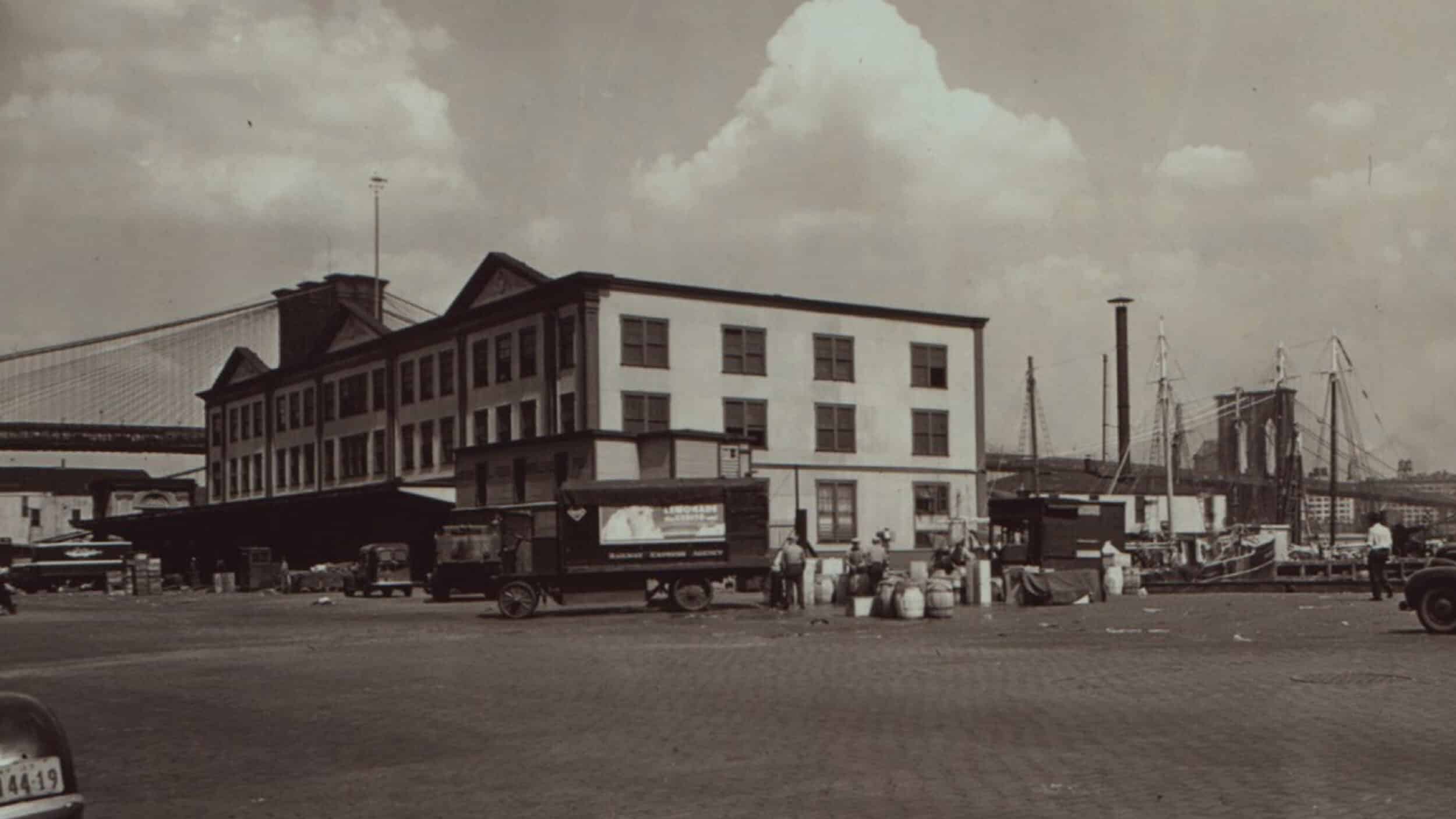
Through the Lens of Barbara G. Mensch: Photographs of the Fulton Market 1980-1985
For decades the waterfront under the Brooklyn Bridge, was a no man’s land. Clandestine underworld activity and sporadic violence along the East River became part of its mythic fabric. Isolated and abandoned during the day, the area came alive at night. Shrouded in darkness, the nearby fish market operated under its own set of rules while the “outside world” opted not to pry.
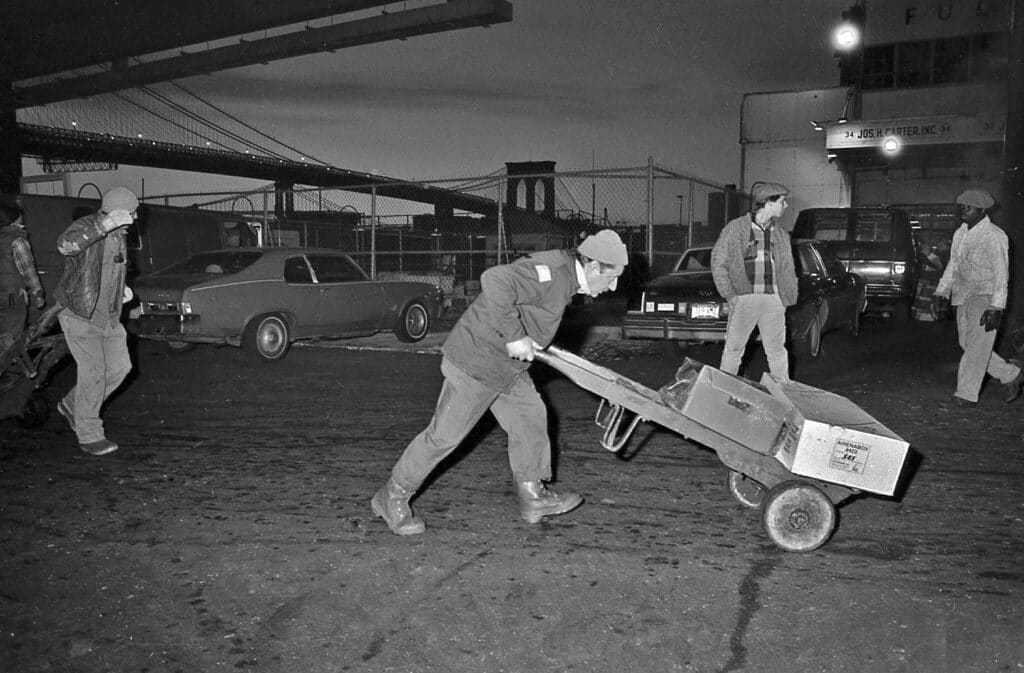
Fire barrels were set ablaze to keep warm, and the “smokies” (homeless men living by the East River) could cook over the flames. Men pushing hand trucks laden down with hundreds of pounds of seafood made a “thump thump“ sound as the wheels bounced over the cobblestone streets en route to their deliveries. Illuminated lights gave the two enormous sheds, “The Tin Building” and “The New Market Building,” an eerie glow while men inside verbally bantered over the price of a pound of cod or bushels of oysters.
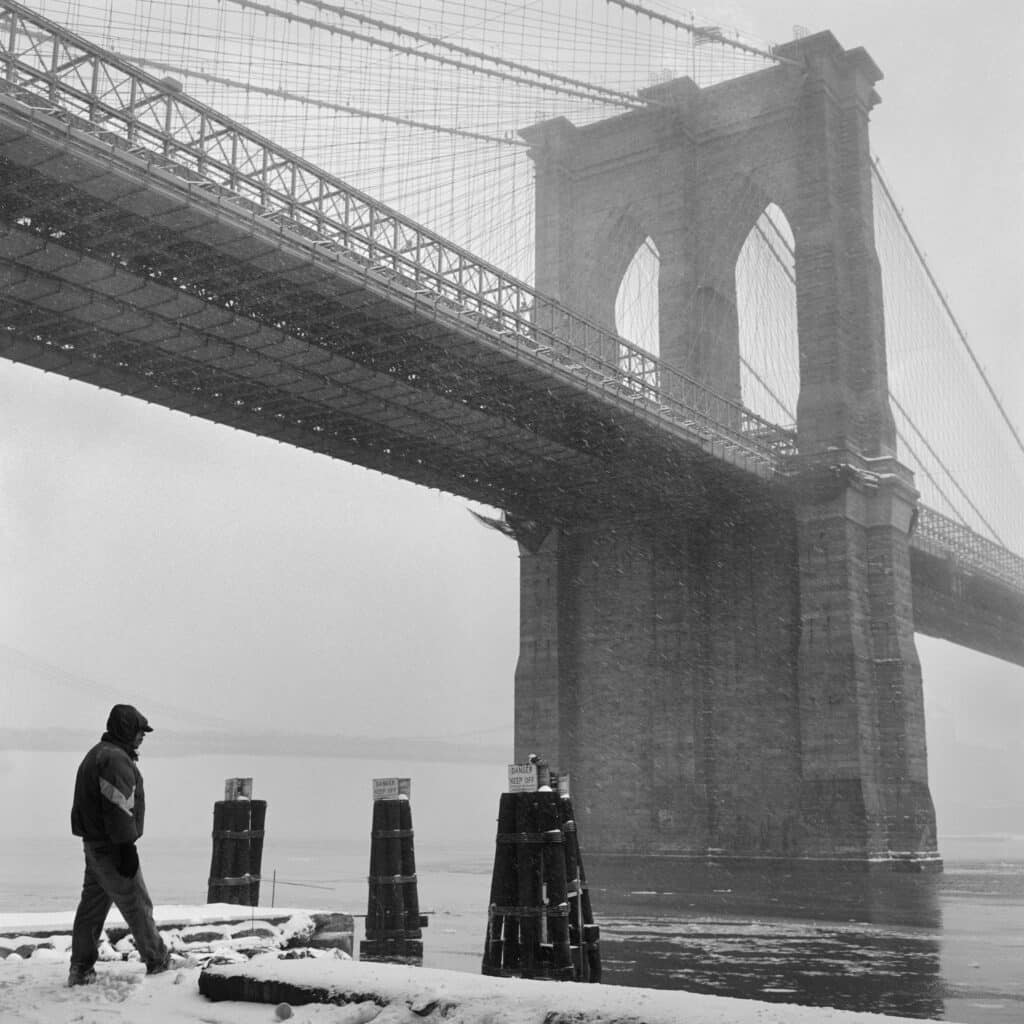
The writer Phillip Lopate wrote about Fulton Fish Market in “South Street” (2009):
“Sunless and boarded up during the day springing into manic activity into the early morning hours…the FDR drive though unsightly, provided excellent cover in all weather for the delivery men pushing hand trucks, coffee wagons, and the open stalls spilling out into the sidewalks. It was the final piece, the roof for a nightly jewel-box theatre under the stars.”
In the early 1980s a young artist, Barbara Mensch, moved into a 19th-century warehouse just steps from the waterfront and the Fulton Fish Market. Like other artists who found their way to affordable spaces in the area, she restored her loft space by hand and preserved the large rings on the oak floors left by the brine barrels that were once stored there. Mensch recalled her kitchen sink plumbing was replaced by an assistant to artist Mark Di Suvero, and her wooden work table assembled by an assistant to artist Richard Serra.
Her move to the area coincided with new proposals to develop the waterfront on locations crucial to the operation of the Fulton Market. Eventually, this bustling fish market could not coexist with the enormity of a project which would call for converting the existing piers into a commercial complex.
Mensch recalled that she was captivated by the visuals of an all night world where few people ventured (if they had no business). As a serious photographer, she knew she had found “gold.” Mensch remembers:
“My early attempts to capture this vibrant workingman’s culture were futile. I began my work against a barrage of investigations by the FBI and local law enforcement into criminal activities at the Fulton Market. I was considered to be a government agent and was continually intimidated.. to put it mildly.”
This series of criminal investigations coincided with the plan to redevelop the waterfront. Mensch reiterated that the only way possible to remain on the street was to gain the confidence of hundreds of workers, many of them sons of immigrants who ventured from Southern Italy and Eastern Europe, their cultural traditions fiercely guarded. Most critical, Mensch had to earn the blessings of powerful men that ruled their “fiefdom”, the operations within the Fulton Market. It was a daunting task, and one that would take years.
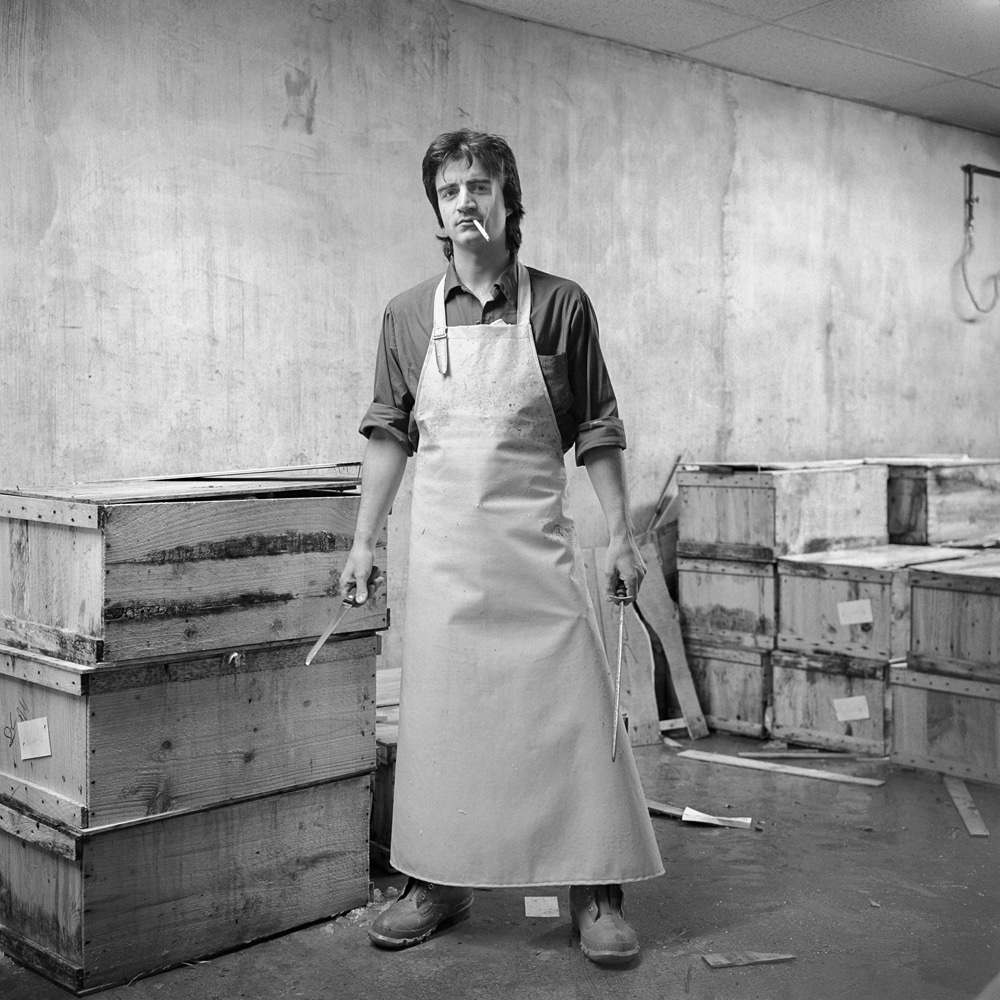
In this workingman’s world, Mensch was determined to photograph the nightly operations at the market. Recording their work activities on film in bitter cold or extremes of heat, she learned about the many ways men of past eras considered their place in society. She highlighted their work ethic through her photographs while communicating to the viewers that an individual who was able to do his job earned the respect of others. Moreover, a worker experienced a sense of pride standing on the street selling fish, or mastering the art of boning shad or carving a large tuna. The “tools of the trade” included grappling hooks, axes, fillet knives, and wooden hand trucks which all contributed to the power of tradition and ritual at the Fulton Fish Market.
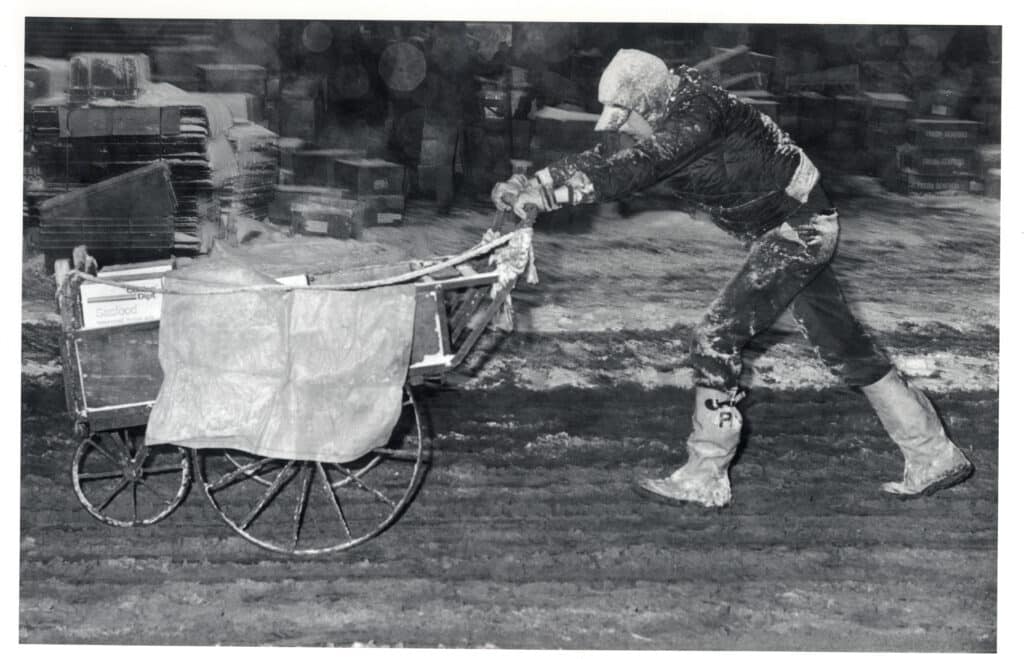
She was slowly assimilated into this urban tribe whose key to survival was solely based on relationships. In this ”Damon Runyonesque” environment, the photographer remembers that the old timers would instruct her:
“The streets are paved with gold, but the smart ones know how to pick it up.”
“You must learn how to sell the Brooklyn Bridge a hundred times over.”
The Tin Building, the photographer explained, in its latest incarnation as an international food destination, traces back two centuries. Mensch recalls how the first structure had its origins in 1835 when plentiful oysters were harvested from the surrounding waters of Manhattan Island. A burgeoning economy based on oysters thrived, so the structure was enlarged and rebuilt in 1848 and then again in 1869. By 1907, the fourth version was built; the facade was covered with corrugated metal and was referred to as the “Tin Building”. The 1907 “Tin Building” was one of two major structures that expanded the Fulton Fish Market. During the 1990’s the Tin Building was set ablaze and then yet again, refurbished.
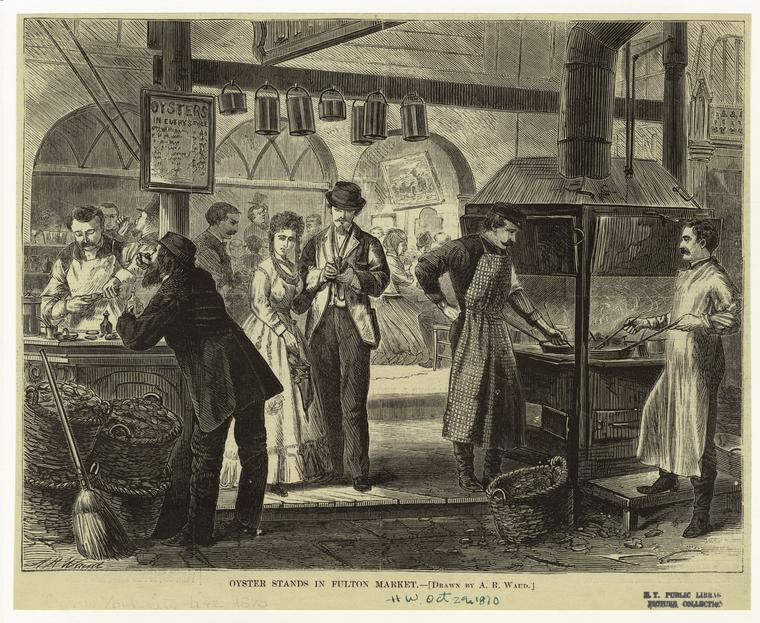
Celebrity chef Jean-Georges and the Howard Hughes Corporation are proud to bring a new version of the Tin Building to the New York City waterfront. It is the latest culinary destination for New Yorkers, one that reflects the diverse palates of the contemporary culture. Mensch’s project for the newly renovated Tin Building (2022), titled “The Nobility of Work,” highlights important themes from her extensive archives of images from the period 1980-1985 taken on the waterfront and at the Fulton Market during that period. In this new site specific installation Mensch utilizes screens of moving images, rich in content and filled with drama and emotion. The installation gives us a glimpse into a vanished community of men “authentic New Yorkers” not to be forgotten. Mensch’s new book (coming in the fall 2023) Empire State Editions “A Falling Off Place” will further explore the transformation of Lower Manhattan, spanning the decades, using images from her personal timeline.
